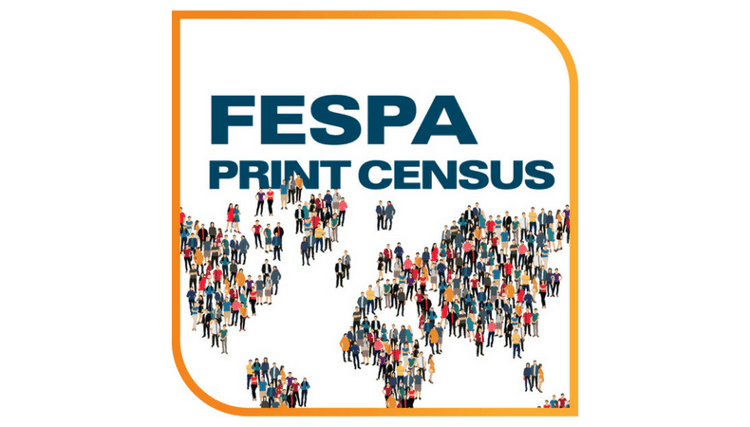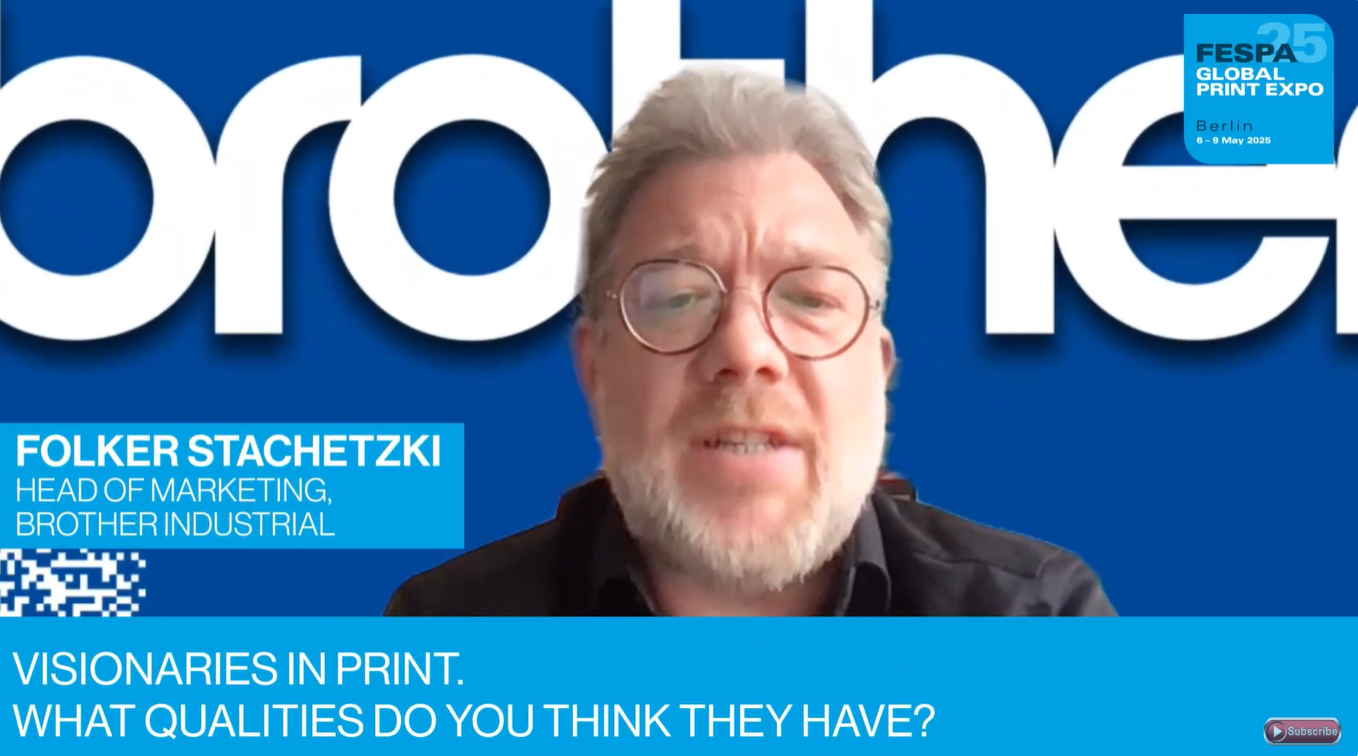2018 print census reveals strategic responses to escalating demand

FESPA today reveals the headline findings of its 2018 Print Census, conducted in partnership with InfoTrends, a division of Keypoint Intelligence
1405 respondents were surveyed, representing a 12% increase over the last Print Census published in May 2015. Respondents were from 102 countries, giving a significantly broader geographical reach than the 2015 research (+59%), with data collected throughout 2017 at FESPA events and from Association members in Europe, Eurasia, Mexico, Brazil, Thailand and South Africa.
The latest Print Census collected data from a diverse range of print businesses defining their business focus as: digital printing (17%); screen (15%); sign and display (10%); textile fabric and direct-to-garment (10%); commercial print and reprographics (13%); graphic arts and creative (11%); and packaging (4%).*
Key 2018 Print Census findings
Analysing the data, the key trends revealed by the 2015 research are just as strong in 2018, and in many cases are even more prevalent, fuelled by continued economic recovery and the positive impact of technology in support of mass-customisation:
- Optimism
The optimism in the 2015 responses is reinforced in 2018; 83% of respondents state that they are optimistic for the future of their business (2015: 80%). This is well-founded, with business from digital wide format continuing to grow, and respondents reporting CAGR of 4.2% since 2007. Today, digital output represents 44% of total revenues, and is forecast to grow to 53% of turnover within 2 years.
2) Customer demands
Print’s ongoing redefinition as a customer-driven service industry is even more pronounced today than three years ago, as businesses meet the continued trend to mass customisation. 72% now report increasing demand for fast turnaround, 61% see growing requirement for short runs and 59% observe rising expectations of just-in-time delivery (JIT).
3) Evolving wide format product mix
Today’s sign and display applications landscape is dominated by banners; 68% regularly produce these and half of respondents see continued growth potential. Signs and billboards maintain their 2015 position among the top applications being produced by respondents.
POS/POP displays are gaining traction, with 59% of businesses experiencing growth in this area. More than half of businesses are also producing more self-adhesive applications, including wraps, vehicle graphics and decals, as they take advantage of continuous developments in digitally printable self-adhesive media.
The continued growth of printed décor applications is evident, with 74% of respondents today identifying wallpaper and interior décor as a growth area for their business.
4) Digital technology investment
Print businesses continue to respond to sustained customer demand for fast turnaround, short runs and JIT delivery with strategic digital technology investments.
In the face of volume growth, increased capacity is now a key investment priority. 54% of respondents cite this as their main motivation for capital spend (2015: 34%). Cost reduction is a factor for 53%, while diversification into new markets and product offerings remains a focus of investment for 53% of those surveyed.
The research also reveals increased investment focus in areas impacting customer satisfaction and consistency. 34% plan to invest in quality control, 28% in web to print, and 27% each on cloud-based content management and colour management, supported by training spend.
Established patterns of technology evolution continue in 2018, with revenue from UV, latex and direct and dye sublimation growing, in contrast to declining use of solvent, aqueous and analogue technologies. 27% of 2018 respondents, in the sign and display segment, plan to buy a UV-cure inkjet printer (flatbed or hybrid), with a further 18% planning UV roll-to-roll or latex investments.
Productivity is the dominant buying criteria, with 63% citing faster speed as the key attribute in a new printer. The mean investment level in sign and display is 43% higher than in 2015, at Euros 144600.
5) Textile
The 2018 Print Census was developed to arrive at a more detailed picture of the growing textile segment. Respondents include screen print businesses with a focus on textile applications, dedicated textile producers and direct-to-garment businesses.
Garment products dominate across all textile businesses, with sports apparel, textiles for garments and fast fashion topping the growth applications ‘leader board’.
Digital adoption for textile is slower than in other segments; across all textile-related segments, production is still dominated by analogue processes. However, among printers focused on textile, 56% have made digital investments, and 19% plan to do so in the next two years, aiming to reap the benefits of reduced time to market, customised creative collections, prototyping, and a positive impact on environmental footprint by reducing water and energy consumption.
Production speed is an investment priority for 69% of textile respondents, and 55% want the ability to print directly onto untreated materials. These investments are motivated by brand owner demand for time-sensitive production that delivers supply chain improvements such as waste reduction, optimises response to seasonal peaks and enables local delivery.
Screen and textile printers expect digital’s contribution to textile printing revenues to grow by 12% in the next two years.
6) Environmental demands
The 2018 Census question set was expanded to acquire up-to-date insights into the importance of environmentally sustainable production.
Responses show that environmental investments are heavily influenced by customer expectations regarding sustainable manufacturing and materials. 76% say that customer demand for environmentally responsible products is shaping business strategy, with more than one in five stating that it is a major influence.
32% of those surveyed have responded by using energy-efficient or environmentally certified equipment to satisfy client demand, with other responses including training on sustainability, use of VOC-free inks and recyclable media, and end-of-life recycling programmes.
72% of PSPs have been able to invest in sustainability without increasing prices, which has preserved sales and maintained price competitiveness.
FESPA Executive Director Sean Holt comments: “Reviewing the 2018 Print Census findings, we’re delighted to again see such a buoyant global community of print businesses enjoying sustained growth and responding by expanding capacity, as well as differentiating themselves with new products and services. The findings display continued commitment among PSPs to understanding and meeting the evolving expectations of customers. Businesses are pursuing customer-centric development strategies, underpinned with planned technology and training investments.”
Holt concludes: “The FESPA Print Census is particularly meaningful as a piece of market intelligence because it reflects the commercial reality for some 1400 print businesses. We believe that this ‘grass roots’ insight, complemented by other FESPA research initiatives into key growth opportunities, can provide tangible benefit to our members by helping them make well-informed decisions to support their long-term growth.”
“For the better part of a decade, FESPA has cemented its position as a thought leader in the industry by its continued investment in research”, comments Ron Gilboa, Group Director, Production Technology at Keypoint Intelligence. “The 2018 Print Census findings will support FESPA members as they plan their future business strategy, while also guiding the global speciality community on the key growth areas in the industry and reinforcing FESPA’s role as a source of timely information for innovators worldwide.”
The full 2018 Print Census report is available free of charge to members of FESPA national Associations or to FESPA Direct members. The cost of the full report for non-members is EUR 2000.00.
Topics
Interested in joining our community?
Enquire today about joining your local FESPA Association or FESPA Direct
Recent news

GenAI + POD: The Smartest Way to Add Personalised Products to Your Retail Offering in 2025
In 2025, GenAI and POD are transforming retail. Masterpiece AI empowers businesses to offer unique, AI-generated personalised products, from apparel to home decor. Customers use text prompts to create custom designs, streamlining production and boosting sales. This revolutionises customer experience and product offerings.
.png?width=550)
What qualities should visionaries in print have? With Folker Stachetzki from Brother
We speak to Folker Stachetzki, Head of Marketing at Brother about visionaries in print.

Bolstering personalisation by combining print and digital technology
Using printed material in combination with digital technologies offers more opportunities to those offering personalisation to customers. Rob Fletcher shares some recent examples of the print and digital working together to enhance the impact of personalised pieces.

European Sign Expo to highlight developments shaping the future of signage and visual communications
European Sign Expo 2025 (6 – 9 May, Messe Berlin, Germany) is weeks away and a host of leading exhibitors are all set to welcome Visionaries from across the signage and visual communications industries to their stands.